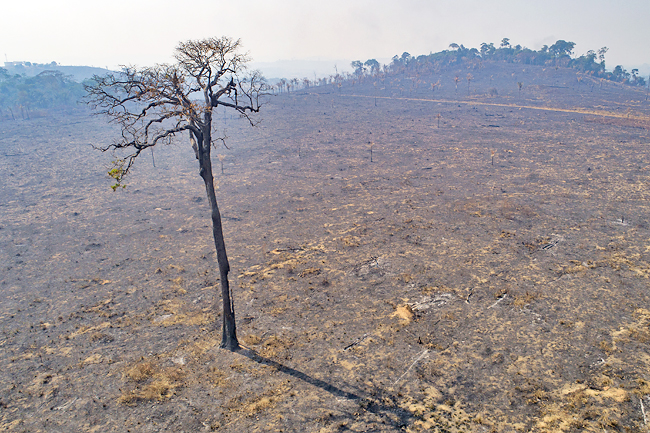Fabiano Maisonnave
RIO DE JANEIRO (AP) – The Amazon region has lost 10 per cent of its native vegetation, mostly tropical rainforest, in almost four decades, an area roughly the size of Texas, a new report said.
From 1985 to 2021, the deforested area surged from 490,000 square kilometres to 1,250,000 square kilometres, unprecedented destruction in the Amazon, according to the Amazon Network of Georeferenced Socio-Environmental Information, or Raisg.
The numbers are calculated from an annual satellite monitoring since 1985 from Bolivia, Peru, Ecuador, Colombia, Brazil, Venezuela, Suriname, Guyana and French Guiana. The report is a collaboration between Raisg and MapBiomas, a network of Brazilian non-profits, universities and technology startups.
“The losses have been enormous, virtually irreversible and with no expectation of a turnaround,” said a statement yesterday by Raisg, a consortium of civil society organisations from the region’s countries. “The data signals a yellow light and gives a sense of urgency to the need for a coordinated, decisive and compelling international action.”
Brazil, which holds about two-thirds of the Amazon, also leads the destruction. In almost four decades, 19 per cent of its rainforest has been destroyed, due mainly to cattle ranching expansion supported by the opening of roads. The country accounted for 84 per cent of all forest destruction in the period.
Almost half of Brazil’s carbon emissions comes from deforestation. The destruction is so vast that the eastern Amazon has ceased to be a carbon sink, or absorber, for the Earth and has become a carbon source, according to a study published in 2021 in the journal Nature.
As of 2021, the Amazon had 74 per cent of its area covered by tropical rainforests and nine per cent of other natural vegetation types. The region, with 8.5 million square kilometres, holds a population of 47 million people, according to Raisg estimated.
“At least some 75 billion metric tonnes of carbon are stored across the Amazon,” Woods Hole Research Center researcher Wayne Walker said during a press conference yesterday in Lima, Peru. “If all that carbon ended up immediately in the atmosphere, that would be about seven times global annual emissions.”









